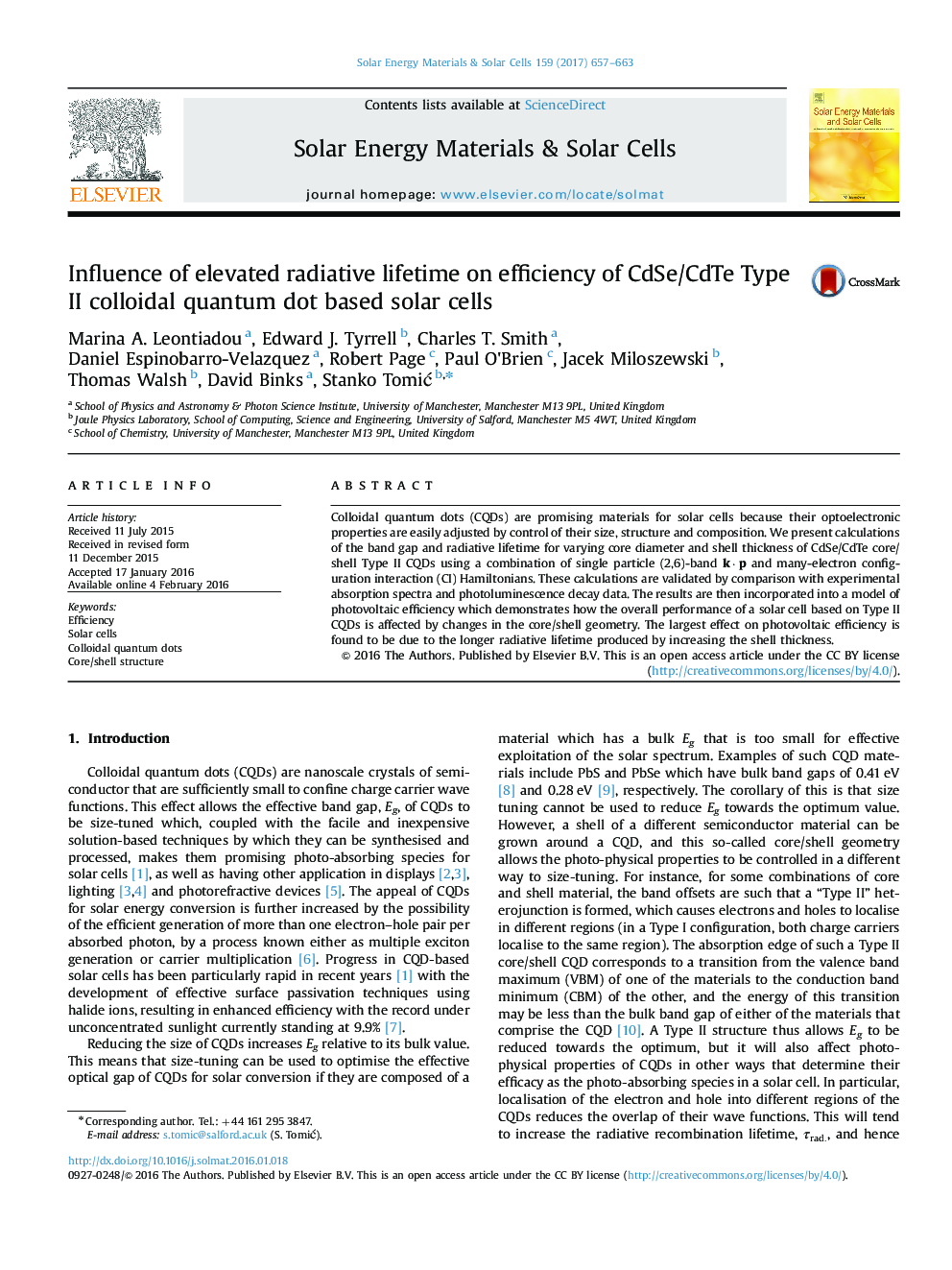| Article ID | Journal | Published Year | Pages | File Type |
|---|---|---|---|---|
| 6457621 | Solar Energy Materials and Solar Cells | 2017 | 7 Pages |
Colloidal quantum dots (CQDs) are promising materials for solar cells because their optoelectronic properties are easily adjusted by control of their size, structure and composition. We present calculations of the band gap and radiative lifetime for varying core diameter and shell thickness of CdSe/CdTe core/shell Type II CQDs using a combination of single particle (2,6)-band k·p and many-electron configuration interaction (CI) Hamiltonians. These calculations are validated by comparison with experimental absorption spectra and photoluminescence decay data. The results are then incorporated into a model of photovoltaic efficiency which demonstrates how the overall performance of a solar cell based on Type II CQDs is affected by changes in the core/shell geometry. The largest effect on photovoltaic efficiency is found to be due to the longer radiative lifetime produced by increasing the shell thickness.
